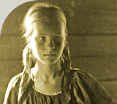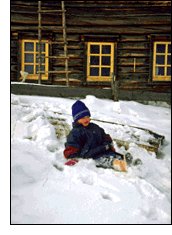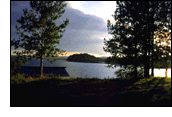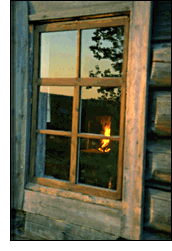 |
| Background |
| Aims |
| Achievements |
| Revitalisation in pictures |
| Current news |
| Main page | Background | Villages | Revitalisation | Cultural tourism | Map | |
|
|
Support for Land Cultivation As early as 1990, the revitalisation process was begun. Thanks to this initiative, seven once abandoned villages (Latvajärvi, Venehjärvi, Ponkalahti, Pirttilahti, Tollonjoki, Pistojärvi and Jyvöälahti) were brought back to life. In 1991, Vuokkiniemi farmers were the first to receive their own farmland within what was then Soviet Union. Many students from the Viena district studied agriculture in Finland in Kainuu region. Those who went on to become farmers have been provided with thorough guidance. In Finland, an agricultural machinery collection was organised for the benefit of the private farmers. The farmers have received building assistance and advice from Finland. Protecting the cultural and natural environment Thanks to the project, the Karelian cultural landscape and the forests of the region are now under protection. Culturally and historically valuable buildings have been restored. Vuokkiniemi now has a church identical to the formerly existing structure. Construction on the Orthodox chapel in Venehjärvi village has been begun. In Vuokkiniemi, the construction of a new school in keeping with Viena building traditions is now underway. Two of the three school buildings were completed in the autumn of 1998. Preserving language and culture
Electricity to the villages Thanks to the support of the Finnish Ministry of the Environment's a power system combining a solar panel and diesel generator provides since 1997 220 volt electricity to each household in the Venehjärvi village. Electricity was taken from the Finnish side of the border to the village of Latvajärvi from Kainuu Electricity company and funded by the City of Kostamus. A power line was connected in October, 1998. The Kalevala Society will pay for the electricity consumption of the villagers for the next ten years. International Cultural Tourism Since 1991 the two foundations have arraged regular cultural tourist trips for small groups to Viena villages to support the revitalizing project. A number of projects are underway to promote international cultural tourism. Such cultural excursions will never evolve into mass tourism. Therefore, village life, the natural environment and the cultural sites will not be disturbed. Problems Russia's unstable political climate and weak economy hampers the revitalization work in the Viena folklore villages. So far, the government funds received from Finland and the international cummunity have proven inadequate.
|
 During
the years 1991-1992, an extensive investigation was made into the
cultural and historical background of the Viena folklore villages.
The issue of revitalisation was also assessed. The revitalisation
programme was then based on the investigation's findings.
During
the years 1991-1992, an extensive investigation was made into the
cultural and historical background of the Viena folklore villages.
The issue of revitalisation was also assessed. The revitalisation
programme was then based on the investigation's findings. There
has been a discussion with the Department of Teacher Education in
Kajaani about providing training for kindergarten teachers in the
Viena Karelian villages.
There
has been a discussion with the Department of Teacher Education in
Kajaani about providing training for kindergarten teachers in the
Viena Karelian villages.